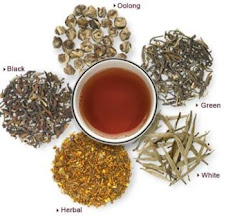 A perennial favorite in Asia and
A perennial favorite in Asia and Health Benefits of White Tea
Undergoing less processing than many other tea varieties, white tea can have ten times the antioxidant power of vitamin E and impressively high concentrations of polyphenols and catechins. It can also help lower cholesterol and inhibit the development of cancer cells. Side benefits include white tea's ability to help increase bone density, aid the immune system, and help lower blood pressure.
Varieties of White Tea
White tea gets its distinctive appearance and name from the white to silver hairs that are visible on the closed buds of the tea plant, and is comprised of a number of varieties. White peony and silver needle are among the most valuable, but other popular varieties are tribute eyebrow, white
Silver Needle White Tea (Baihao Yinzhen)
Taken exclusively from buds of the tea plant before opening, silver needle tea is not rolled, fired, or fermented. The harvested buds are steamed and dried, resulting in the finest quality white tea. Silver needle tea has a delicate flavor and resembles a handful of green-gray to silver needles, the visual characteristic for which it is named.
White Peony Tea (Bai Mudan)
Somewhat stronger in flavor than silver needle tea, white peony is taken from the bud and the first few leaves of the tea plant (not the peony).
Brewing White Tea
The White tea needs a lower water temperature for optimum flavor. According to the White Tea Guide, the leaves can be reused several times, but should be steeped longer than in the initial brewing.
Tea is an occasion as well as a beverage. White tea, one of the most delicate and now possibly healthiest, offers a refined flavor and aroma for the discriminating tea enthusiast.
Tea Tips
Keep your tea container sealed and in a cool dark place. Water temperature requirements vary depending on the tea variety you are trying, as do the recommended steep times. White tea is great, but don't stop there. Exploring tea can be a great hobby that's also good for you.












